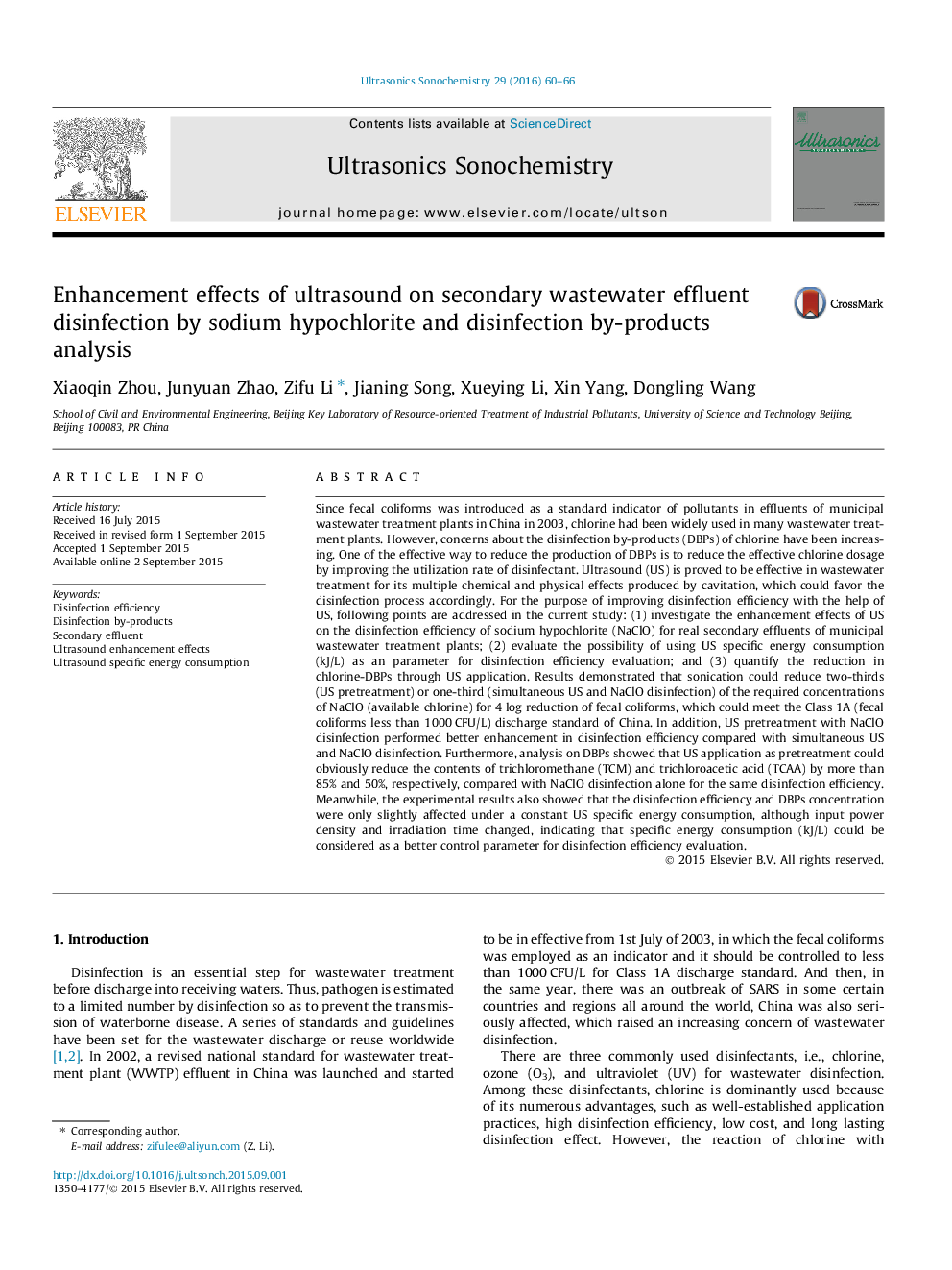| کد مقاله | کد نشریه | سال انتشار | مقاله انگلیسی | نسخه تمام متن |
|---|---|---|---|---|
| 1265853 | 1496875 | 2016 | 7 صفحه PDF | دانلود رایگان |
• US pretreatment can improve NaClO disinfection significantly.
• Specific energy consumption (kJ/L) is a suitable parameter to evaluate disinfection efficiency.
• Disinfection by-products such as TCM and TCAA can be reduced significantly by NaClO in combination of US.
Since fecal coliforms was introduced as a standard indicator of pollutants in effluents of municipal wastewater treatment plants in China in 2003, chlorine had been widely used in many wastewater treatment plants. However, concerns about the disinfection by-products (DBPs) of chlorine have been increasing. One of the effective way to reduce the production of DBPs is to reduce the effective chlorine dosage by improving the utilization rate of disinfectant. Ultrasound (US) is proved to be effective in wastewater treatment for its multiple chemical and physical effects produced by cavitation, which could favor the disinfection process accordingly. For the purpose of improving disinfection efficiency with the help of US, following points are addressed in the current study: (1) investigate the enhancement effects of US on the disinfection efficiency of sodium hypochlorite (NaClO) for real secondary effluents of municipal wastewater treatment plants; (2) evaluate the possibility of using US specific energy consumption (kJ/L) as an parameter for disinfection efficiency evaluation; and (3) quantify the reduction in chlorine-DBPs through US application. Results demonstrated that sonication could reduce two-thirds (US pretreatment) or one-third (simultaneous US and NaClO disinfection) of the required concentrations of NaClO (available chlorine) for 4 log reduction of fecal coliforms, which could meet the Class 1A (fecal coliforms less than 1000 CFU/L) discharge standard of China. In addition, US pretreatment with NaClO disinfection performed better enhancement in disinfection efficiency compared with simultaneous US and NaClO disinfection. Furthermore, analysis on DBPs showed that US application as pretreatment could obviously reduce the contents of trichloromethane (TCM) and trichloroacetic acid (TCAA) by more than 85% and 50%, respectively, compared with NaClO disinfection alone for the same disinfection efficiency. Meanwhile, the experimental results also showed that the disinfection efficiency and DBPs concentration were only slightly affected under a constant US specific energy consumption, although input power density and irradiation time changed, indicating that specific energy consumption (kJ/L) could be considered as a better control parameter for disinfection efficiency evaluation.
Journal: Ultrasonics Sonochemistry - Volume 29, March 2016, Pages 60–66
